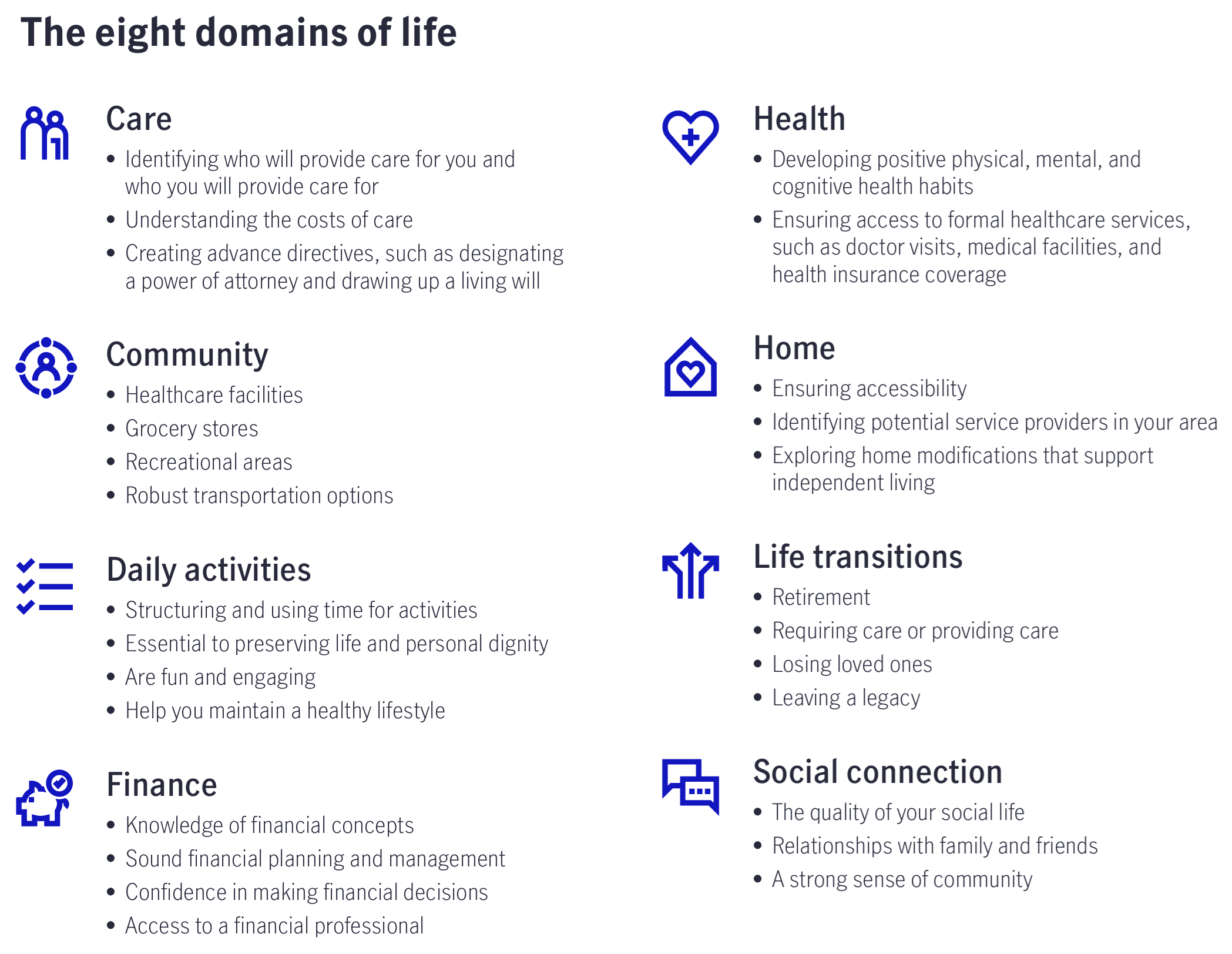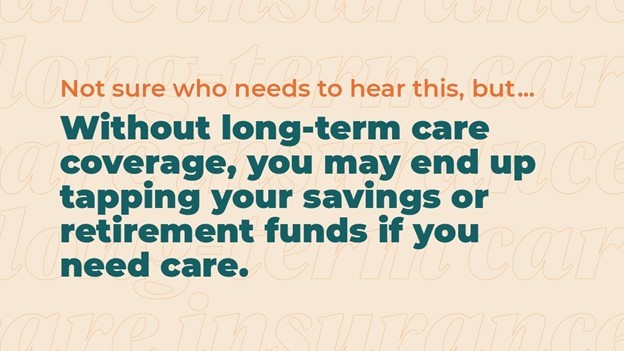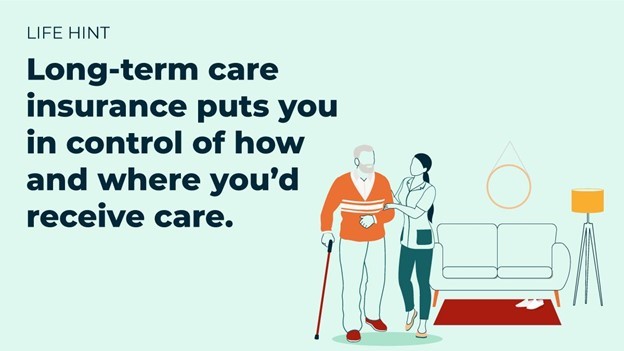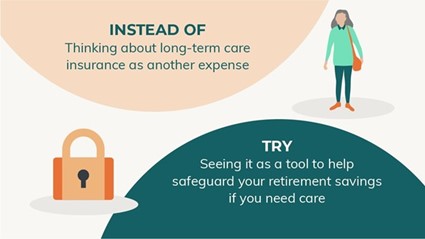When you think of your future retirement, you may be concerned about how much Social Security you will receive or if your 401(k) and other investment accounts will last. You should also be adding the cost of long-term care to your list of retirement necessities. Between unforeseen medical expenses and the possibility of nursing homes or assisted living facilities, the costs can add up quickly.
We see far too many people who simply ignore the topic of long-term care because they are worried about whether they can afford it. But it should not be forgotten because many, if not most of us, will need it at some point in our lives. Someone turning age 65 has about a 70% chance of needing some kind of long-term care service or support for the rest of their life. The cost of long-term care is continuing to rise, but there are ways you can start planning and preparing for higher costs now.
1. Understand long-term care options
Life expectancy in the United States has risen to 77½, according to the CDC, increasing for the first time in two years. This is why it is important to research and understand all of the long-term care options available. Discuss your wishes with your spouse and family members so they know what you want, if and when the time comes.
After you discuss your options with your family, consider talking with your financial adviser to see if long-term care insurance may be right for you. Without a proper plan, healthcare costs can drain your savings. Regular health insurance doesn’t cover long-term care, and relying on Medicare alone will not be enough. Long-term care insurance can help cover nursing home costs and home health care later in life. It can also help pay for any chronic medical issues, like Alzheimer’s or cancer. While some employers may offer long-term care insurance as part of their benefits, most people buy it through their financial professional.
2. Invest in a health savings account
If you are still working and saving for your retirement, consider a health savings account. An HSA is a tax-advantaged savings account that you can use at any age to pay for qualifying health care expenses. To contribute to an HSA, you must have a high-deductible health plan (check
your policy’s coverage details or contact your insurance company to see if your plan is HSA-
eligible). An HSA can be used to fund current healthcare costs, but the balance carries over each year and that money can be invested to grow for the future.
The IRS sets HSA contribution limits each year. In 2024, you can contribute up to $4,150 if you have health coverage just for yourself and $8,300 if you have coverage for your entire family. Those age 55 and older are eligible for a catch-up contribution of $1,000. Being able to pay for some of those expenses with tax-free money would be much more efficient than paying for them with money you have to pay taxes on first.
3. Strategize when to claim Social Security benefits
We pay into Social Security throughout our career, and when we hit retirement age many are eager to start claiming those benefits. However, most people do not understand how their benefit amount is calculated. Your monthly benefit is calculated by using your 35 highest-earning years. The earliest you can claim Social Security is age 62. While it may be tempting to turn on your Social Security benefits as soon as you reach that age, it can be beneficial to delay your benefits.
Claiming benefits before full retirement age results in a permanent reduction by as much as 30% of your benefit. If you delay claiming, it can be a big bonus. Your benefit will grow by as much as 8% per year from your full retirement age through age 70.
If you are married, Social Security spousal benefits are designed to provide additional retirement income for couples. If you are divorced and have not remarried, you may be able to claim benefits based on your ex-spouse’s benefits if their benefits are higher than your own. And if you are a widow, you are eligible for your partner’s benefit if it is higher than yours.
It’s important to talk through claiming strategies with your financial adviser before your 62nd birthday; claiming at the right time for your unique situation often means more money in your monthly check!
When saving for retirement, you should always include a plan for any unexpected medical bills. Healthcare expenses can take up a large amount of your retirement income. Working with your financial adviser is a great way to come up with a plan to boost your retirement savings and prepare for the cost of long-term care.












